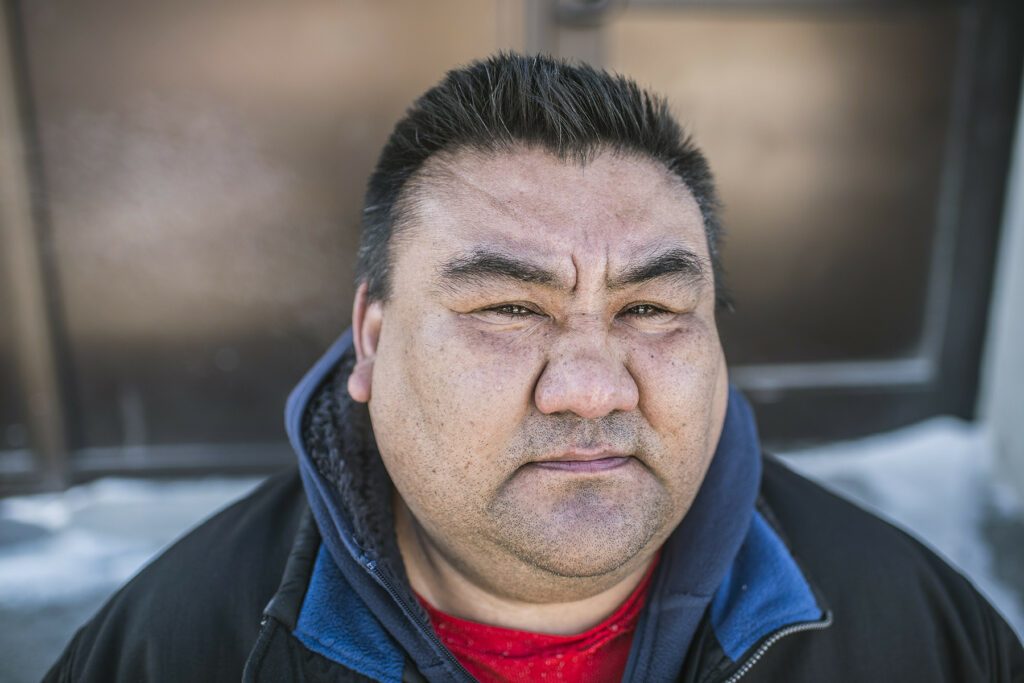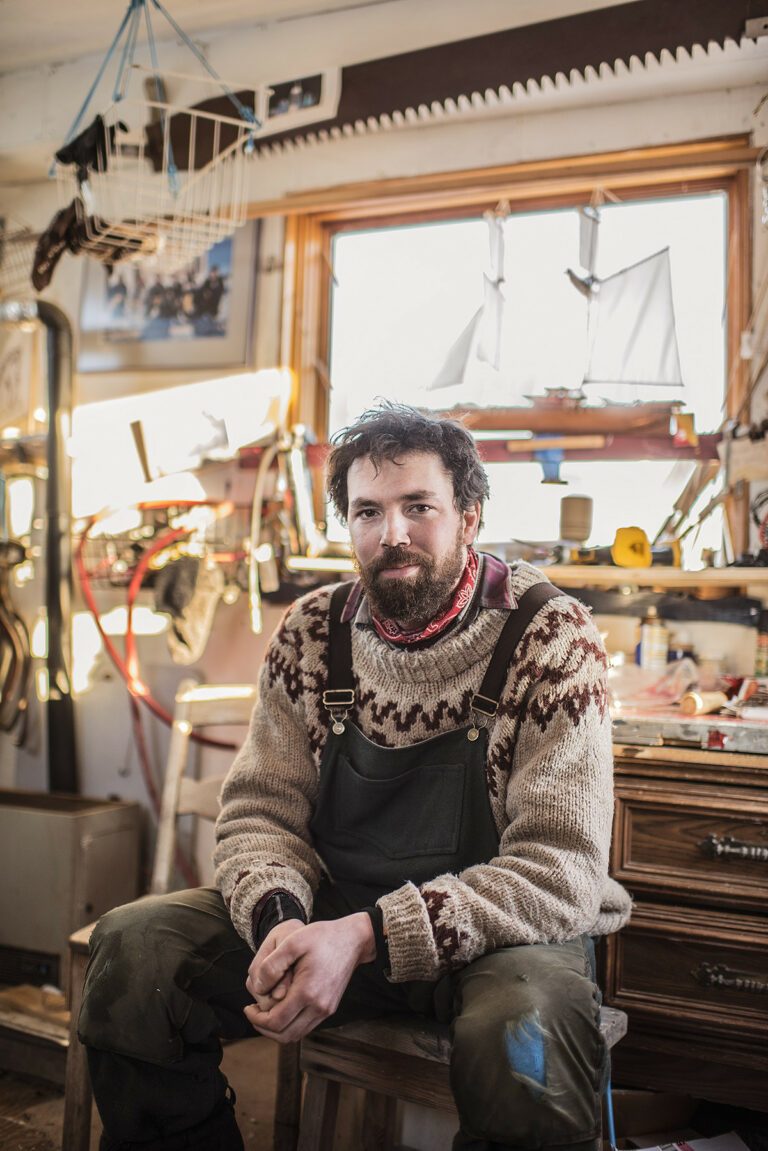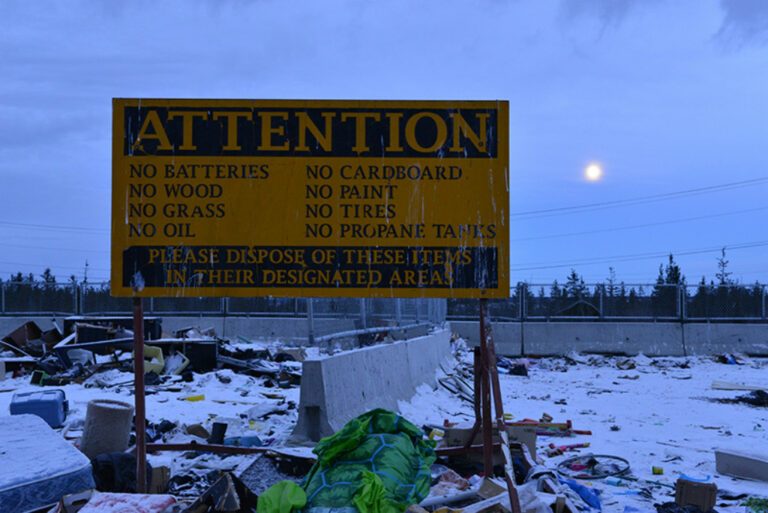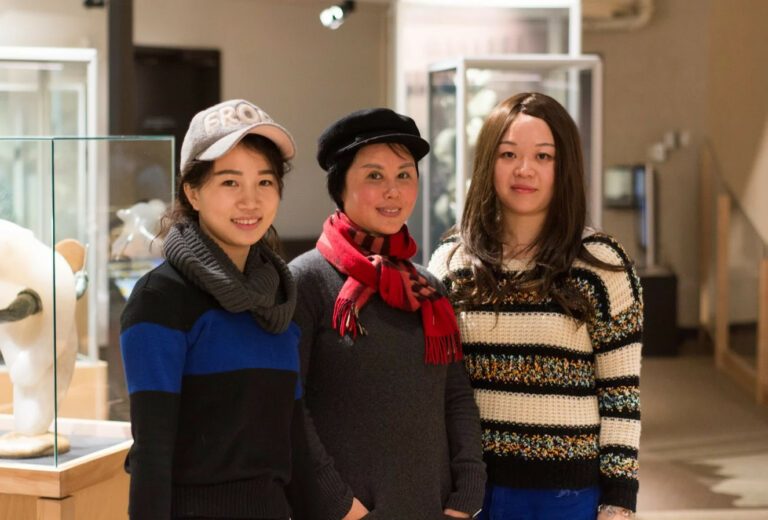If you’ve been in Yellowknife for a while, you’ve probably come across James Thrasher. He’s the big guy, built like an offensive lineman, who’s often perched on the edge of the flower boxes in front of the post office or staying warm in the A&W. In many ways, James is just like other Yellowknifers. He’s worked most of his life, rented apartments and tried his best to support himself and his family. But James has also struggled more than most.
As with many people in the street community, James grapples with addiction, mental health issues and the attendant traumas of family dysfunction and residential school. “I never knew what normal was,” he says. “Because of my past, because of the issues, I was depressed every day. I’d wake up sad, I’d go to sleep sad.”
Two years ago, he was diagnosed with post-traumatic stress disorder. Since then he’s been living, on and off, on the streets of Yellowknife – right now he spends his days at the Safe Harbour Day Centre and nights at his niece’s apartment.
I meet up with James in the day shelter on Wednesday, Feb. 25. It’s just after the shelter has reopened for the afternoon and James helps himself to cheese, crackers and several bottles of Gatorade that he tucks into his bag to take with him.
“It’s been tough, but places like this really help me out,” he says, looking around the busy room. “Without places like this I’d be completely depressed.”
***
James was born in Inuvik but grew up in Aklavik. His father was a diabetic who slept much of the time; his mother struggled to make ends meet by sewing parkas and cushions. It was by no means a happy childhood – “I didn’t want to be poor and useless, and that came from my family,” he says. Tragedy struck early and often.
He was only nine years old when his brother Eugene Thrasher was shot dead by RCMP officers in Aklavik.
“He freaked out one night when he was drinking, because my dad wouldn’t let him marry his girlfriend, and started shooting all over Aklavik,” says James. Eugene shot through the door of the Catholic mission and killed the resident priest, Father Jean Franche, before being gunned down on the banks of the Peel Channel. It was 1974. Eugene was just 16.
“He was a really solid person. He looked after us,” says James. “He had his own band and used to let me come and sing with him.”
This was only one of the traumas that defined James’ childhood. There are many things James won’t talk about, and many memories still locked up inside.
“It’s a way to survive… your brain, that blocks out stuff you may not be ready to face. I lost a lot of my youth because of that. Three years of my youth I don’t remember, from when I was six till when I was nine.”
When he was 12, he was sent to Grollier Hall, the infamous residential school in Inuvik, which he attended for four years. It’s not an experience he likes to dwell on, explaining that his residential school survivor case was bumped up from a four to a five – the highest level of seriousness – after his first interview.
“Put it this way, I went to jail for a while, 80 days in remand… The time I was in Grollier Hall felt exactly like I was in jail. The same system, the same everything. There just wasn’t as much swearing in jail.”
***
After being kicked out of Grollier Hall in his final year, James began working on drilling ships in the Beaufort Sea, first as a ship’s hand and then as a crane operator. He spent 10 years on the ships. When the drilling company went under, he moved back to Inuvik to train as a carpenter.
For the next 20 years, he worked all over the NWT and in Northern Alberta as a carpenter and mineworker. All the while, he struggled with alcohol abuse, depression, undiagnosed PTSD, and the grief of losing family and friends.
“I used to drink to forget, then that drinking became an obsession. And now I’m an alcoholic.”
He sought counseling over the years, and tried to quit drinking, attending AA meetings and using services like The Healing Drum and the Tree of Peace in Yellowknife. He says the services in Yellowknife are decent, though they’re too focused on addictions.
“They’re all dealing with the alcohol issues, they don’t deal with the actual depression or actual anxieties. When that stuff does come up, they refer you to a doctor. So you don’t get the help you need. I know that for a fact, because I’ve been through the wringer.”
Around seven years ago, he had a breakthrough in his healing process at Poundmakers Lodge in Edmonton.
“Being able to talk about death. That was the hardest thing I could ever do. I went to treatment programs and I couldn’t talk about it… I drank all my life because of this… but I never really broke out the entire story until I went to Poundmakers… and it was a spiritual awakening.”
Still, the sadness that had followed him since as long as he can remember remained. In 2012, while he was living in Yellowknife and doing shift work out at Diavik Mine, he downed a bottle of sleeping pills. It didn’t work, so he tried again. Still nothing. He went back to work, but a few months later he checked himself into Stanton Hospital, spending two months in the psychiatric ward. It was there he was finally diagnosed with PTSD. He now takes 14 pills a day to keep his depression and anxiety in check.
“They get rid of that feeling of sorrow, or feeling of sadness. I was at the brink, before I started taking pills. Without these pills I’d probably be dead right now.”
***
James’ case may sound extreme. But behind the prevalent substance abuse and homelessness in Yellowknife’s street community are many stories like his – stories of mental unwellness, disrupted childhoods, violence, colonialism and a terrible, abiding sense of grief.
“What you see in Yellowknife, it’s all trauma-related,” Lydia Bardak of the John Howard Society tells me. “I really don’t know anyone out there who wasn’t sexually molested as a child. And early and unresolved trauma of being molested and or witnessing violence in the home, that person is carrying it with them.”
Add to that trauma the prevalence of fetal alcohol syndrome and the results of an often violent lifestyle – “Every fat lip, bloody nose, bruised cheek is a blow to the head, perhaps a concussion” – and you have a perfect storm for mental illness, which often bleeds into substance abuse, says Lydia.
“And in the North we have multiple sudden deaths. People barely get over one and there’s another. And it’s not normal grief and loss… it’s suicide, murder, people going missing. That kind of grief is something that they’re carrying as well.”
Lydia’s analysis is echoed, in part, by Byrne Richards, the executive director of the Tree of Peace Friendship Centre in Yellowknife. He’s not keen on the term mental health, he tells me when we meet in his Tree of Peace office on Wednesday afternoon. It’s more a question of mental wellness, he says, understood less as a medical condition and more as balance and the ability to cope with tragedy in non-self harming ways. Thought of like this, the experience of the street community, with its heavy reliance on alcohol, drugs and other self-harming coping mechanisms, has to be understood in a historical context, he says. For aboriginal people in the street community that means the very recent history of colonization.
“Basically we’re talking, for short form, 60 years in transition from living on the land with dog teams and surviving out there without being provided for, to what exists today,” says Byrne. “I think about men, and their loss of role. They went from being unbelievable survivors in a harsh environment that managed to keep their families alive and fed, to having all of their needs being provided for and their purpose being taken away from them. You mix in with that the residential school piece about the loss of culture, the loss of purpose and direction and we’re left with a group of people with no purpose and direction at all.”
Bryne did challenge the idea that everyone in the street community was mentally unwell, pointing out that many people thrive when they return from Yellowknife to their home communities, and that the caring, friendship and communal spirit that’s highly visible in the street community speaks, in some ways, to a more balanced life than many supposedly “normal” people live. Still he argues that the ubiquitous substance abuse and addiction in the community is rooted in historical wrongs and the way they undermine one’s sense of self.
“You can’t talk about mental health, mental wellness, without having it through that lens [of residential schools]; if the white population gets tired of hearing it, too bad. There’s a grief and loss period that has to happen… We had whole communities with children in them, decimated in one day. We didn’t hear from the children for 10 years. And when the children came back they didn’t know how to talk to their fathers, their mothers, and their mothers didn’t know what to do.
“Drugs, alcohol, and the different coping mechanisms are symptoms of something else,” he adds.
***
Since James began taking anti-depressants, he says he’s been on a more even keel. He’s able to walk down the street without dreaming of hurting himself, though he still drinks. When I try tracking him down on Friday, he’s been kicked out of the day shelter for 48 hours for drinking inside.
He’s still in the process of settling his residential school survivor claim and expects to receive his payment sometime in the spring.
“I plan on buying two vehicles, one for leisure and one for work. I plan on starting up a business with my own money. It’s going to be a handyman service where I do from the smallest jobs to the biggest jobs like construction, carpentry, add-ons.”
And he wants to hire other people from the street community when he gets his business up and running.
“I was always given a second, third, fourth chance. I believe everybody needs a chance, so the job I give them might be the job that keeps them working for a long time. If I can give a hand to one person, then it will be satisfying.”
The pills have helped him stabilize emotionally, but it’s not all good. They affect his memory and his vision, he says. And there are still things he says he needs to get off his chest, regardless of the pills, if he’s going to quit drinking.
“Part of trying to get rid of my alcoholism is I have to be truthful, I have to be honest no matter how that hurts inside, I have to let it go. And I’m letting go quite a bit lately. I used to cry a lot, but I don’t cry as much as I used to. Still, it’s really tough to get rid of stuff in the past.”
Part One: Frozen Out: Homeless at Sub-Zero
Part Two: Frozen Foods: Hungry at Sub-Zero







